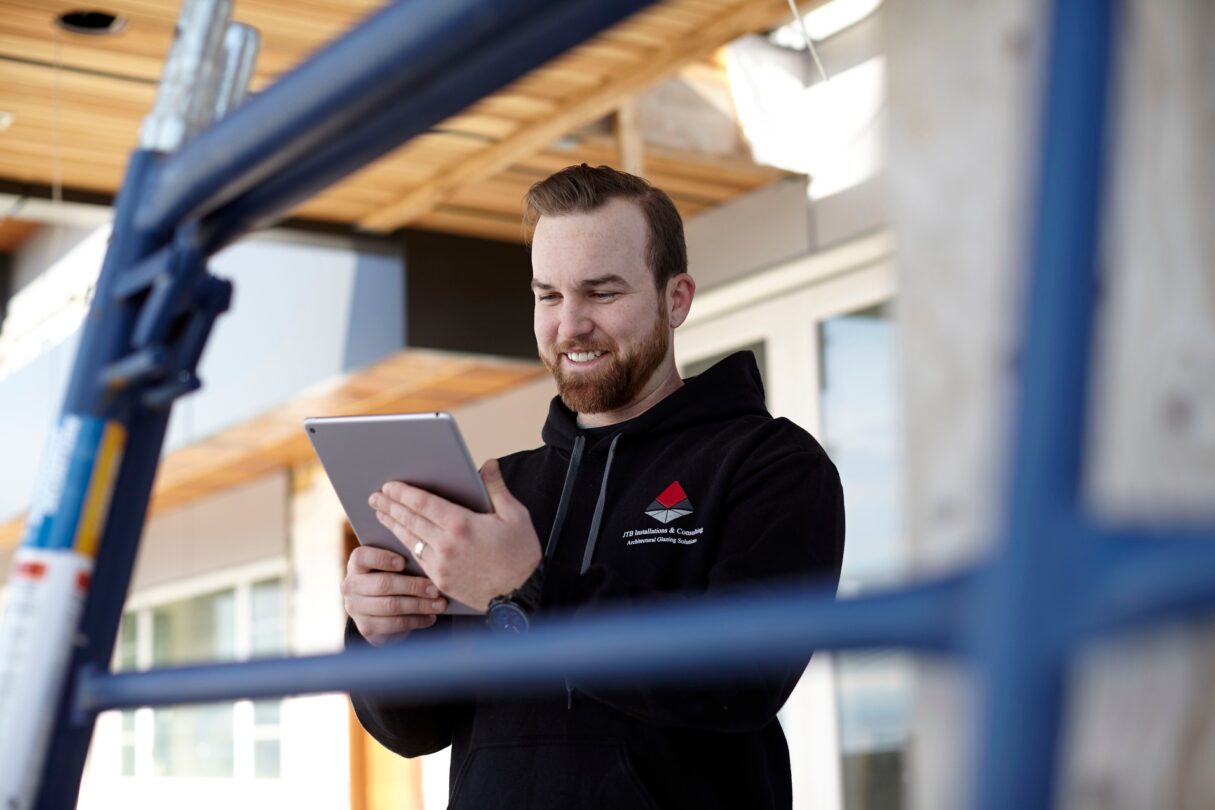Money Matters
MTD for Income Tax: 7 things you need to know about Making Tax Digital for your business

Making Tax Digital for Income Tax is being called one of the biggest shake-ups in personal tax for a generation.
It presents opportunities for businesses to become more efficient at their core accounting tasks, as well as doing their tax better. This frees up more time to put into the business.
It does this by legally requiring the digitalisation of income tax accounting.
In other words, you must use software for your accounting records relating to income tax, and you have to make regular submissions via software to HMRC to let them (and you) know how much tax you owe.
In this article, we take a look at some key points that should help you understand more about MTD for Income Tax, starting with a quick round up.
Here’s what we cover:
- Making Tax Digital for Income Tax: A summary
- 1. MTD for Income Tax will make life easier
- 2. MTD for Income Tax means you won’t need to submit a tax return
- 3. MTD for Income Tax starts in April 2026 – but you might not have to start until 2027
- 4. What are the basis period reforms for Making Tax Digital for Income Tax?
- 5. MTD for Income Tax applies to you
- 6. Who does not need to use MTD for Income Tax?
- 7. What’s the MTD for Income Tax pilot scheme?
- Final thoughts on MTD for Income Tax
A guide to Making Tax Digital for Income Tax
Need help to get your business ready for Making Tax Digital? Download this free guide to learn about MTD for Income Tax and get prepared now.

Making Tax Digital for Income Tax: A summary
Here’s a short summary of what Making Tax Digital for Income Tax means:
- It will affect sole traders and landlords that currently use the Self Assessment income tax system. In the first phase, it will apply to those earning over £50,000 and in the second phase, those earning over £30,000.
- For each sole trader business, and for the total rental income, it requires at least four reports across the year (typically quarterly), and an end of period statement (EOPS).
- A final declaration must be submitted by each individual by 31 January following the end of the tax year (that is, 5 April the previous year).
To learn more of the specifics you might want to take a look at our other articles:
- MTD for Income Tax: The complete guide
- MTD for Income Tax: What landlords need to know
- MTD for Income Tax: What Making Tax Digital means for sole traders
1. MTD for Income Tax will make life easier
You might look at the requirements for MTD for Income Tax and become concerned that more admin work is involved.
But in fact, accounting software will be able to automate much of this, such as the compilation of quarterly reports.
Bearing in mind it can’t be avoided, MTD for Income Tax is best looked upon as an opportunity to do things better – and to reduce business admin overall.
If your business isn’t already using accounting software then its introduction is likely to be revolutionary. Suddenly you can do things like issue invoices with a single mouse click (or tap of a screen). You can get reminded of overdue invoices, and chase them up in the same easy way.
For businesses already using accounting software, MTD for Income Tax is likely to make you much more aware of your ongoing cash flow and tax situations.
If you provide accurate information when submitting quarterly reports, you’ll always know how much tax and National Insurance you owe.
This can lead to better budgeting and forecasting.
You’ll have no need to set aside a large amount in the intention of over providing for your tax payment. Instead, you can be more surgical – and that means more cash freed up for you and your business.
Above all, MTD for Income Tax presents a golden opportunity to overhaul your business and tax administration.
Using the latest technology, you can reduce your overall admin work, reduce the stress of it all, and free up more time to do the things you love.
2. MTD for Income Tax means you won’t need to submit a tax return
When Making Tax Digital was first announced in 2015, the chancellor said it was “the death of the annual tax return.”
When it comes to MTD for Income Tax, most people will no longer need to submit a Self Assessment tax return.
Instead, you’ll complete quarterly reports, an end of period statement (EOPS), and a final declaration on 31 January each year.
But some people will still need to submit a tax return. This is for a variety of reasons.
It’s certainly true that if you’re required to use MTD for Income Tax, you won’t need to submit a Self Assessment tax return for income from your sole trader and/or landlord rents.
Instead, you’ll use the final declaration component of MTD for Income Tax to effectively fulfil the same task – letting HMRC know about your income, allowable expenses, adjustments, and so on.
This will follow your end of period statement(s), and your periodic reports that should be at least quarterly.
However, some people may still need to submit a Self Assessment tax return for income or allowances outside the scope of MTD for Income Tax.
And, of course, those whose turnover is below the second £30,000 threshold will need to continue submitting a Self Assessment return for their sole trader and/or landlord income.
Those earning over £50,000 who start using MTD for Income Tax will probably find themselves submitting a final Self Assessment tax return on 31 January 2027 – after the 6 April 2026 start date of the scheme.
This will be for the 2025/26 tax year, which is the final tax year before MTD for Income Tax begins.
3. MTD for Income Tax starts in April 2026 – but you might not have to start until 2027
If you fall within the scope of MTD for Income Tax, you’ll need to work out your start date.
This is when you need to begin following the MTD for Income Tax rules, following the launch of the scheme in April 2026.
Assuming you earn over £50,000, you’ll have to start from April 2026. If you earn below this but above £30,000, you’ll have to follow the new rules a year later, in 2027.
4. What are the basis period reforms for Making Tax Digital for Income Tax?
The basis period is how HMRC refers to the period for which you must pay tax.
For most businesses, the basis period matches their accounting period.
However, Making Tax Digital for Income Tax shines a new light on basis periods and indicates they might be problematic if any of the following are true:
- You own multiple sole trader businesses that have varying basis periods. In this case, you may find yourself frequently having to take care of quarterly reports. For example, if you own three businesses that are staggered by a month in their basis periods, then you will have to submit at least one quarterly report each month. You may also find that one business may be required to use MTD for Income Tax while another has its digital start date in the future, so continues to use Self Assessment.
- You own a sole trader business and are a landlord. Landlords must use 6 April to 5 April as their basis period for MTD for Income Tax. But your sole trader business may have a different basis period. Again, this might mean a staggered requirement to submit periodic reports that is administratively onerous.
The basis period reform suggestion from HMRC is that all sole trader businesses to use 6 April to 5 April as their basis period.
If it goes ahead, this will take effect in the tax year 2023/24. But it should be emphasised that it’s not a certainty at this point.
Although intended as a simplification of tax affairs, basis reform is not without potential problems.
Some customers may find their transitional basis period stretches out to up to 23 months while they adjust, leading to a larger-than-average tax payment.
HMRC suggests that the basis period reform will therefore be accompanied by some transitional relief, applying to tax payments across the five years to 2026/27.
5. MTD for Income Tax applies to you
This is perhaps an obvious point, but it’s worth mentioning.
If you fall within one of the two scopes of over £50,000/£30,000 turnover, MTD for Income Tax is about ensuring you get your income tax correct.
This income tax is based on sole trader businesses you might run, and any rental income.
But ultimately, the goal is to work out and then pay your personal tax bill, plus any National Insurance contributions.
This is why you only complete one final declaration on 31 January each year as part of MTD for Income Tax.
But MTD for Income Tax means you also need to provide individual quarterly reports and EOPS for each of the businesses you run, and for rental income.
For example, somebody who runs two sole trader businesses and receives rental income will have the following requirements:
- 12 quarterly reports
- 3 EOPS by 31 January at the latest
- 1 final declaration by 31 January at the latest
6. Who does not need to use MTD for Income Tax?
This is a non-comprehensive list of those who aren’t covered by MTD for Income Tax (at least not in the first wave of inclusion following the launch in April 2026 – they may be included later):
- Those currently using Self Assessment whose turnover from sole trader and/or property rental income is £30,000 or below.
- Those whose income does not come from sole trader and/or property rental income (e.g. those whose only income is from a pension).
- Limited Liability Partnerships (LLPs).
- Partnerships that include an incorporated company as a member.
- Trusts and estates.
- Trustees of registered pension schemes.
- Non-resident companies.
- Those who HMRC agree are digitally excluded, typically for reasons of location or belief. For example, it may not be possible to get an internet connection where you live because of your remote location, or your religious beliefs may prohibit you from using technology in the way that MTD for Income Tax requires. But be aware that HMRC will be quite strict about allowing exclusions. If you lack an internet connection but your accountant has one, or you can perhaps visit a library with online computers, then you might be expected to make use of those facilities.
7. What’s the MTD for Income Tax pilot scheme?
It’s entirely possible or businesses to sign up for MTD for Income Tax ahead of the April 2026 mandation date.
To do this, you can sign up for the MTD for Income Tax pilot scheme.
However, you should bear in mind the following:
- If you employ an accountant, are their systems and processes compatible with MTD for Income Tax? You should discuss this with them first.
- Do you have accounting software compatible with MTD for Income Tax? At the time of writing, none of the major accounting software vendors have done so.
- It might not be possible with withdraw from the MTD for Income Tax pilot scheme once you’ve joined.
- At present, you’ll probably need to fulfil the following criteria to use the pilot scheme:
- You must be a UK resident.
- You’re a sole trader with a single business, or a landlord which rents out UK property (or both of these things).
- Your previous Self Assessment return had a turnover that’s over £30,000.
Final thoughts on MTD for Income Tax
Getting your head around MTD for Income Tax is something that should begin sooner, rather than later.
Between now and April 2026/2027, you’ve got the opportunity to get ahead of the game so you can hit the ground running, with all your admin processes up to speed.
Keeping in mind that MTD for Income Tax is intended as a simplification will help you keep a level head throughout it all.
Once you’ve mastered the basics and partnered your business to the best accounting software, MTD for Income Tax really will deliver results in terms of a better understanding of your finances, and reduced admin requirements.
Starting now, rather than putting it off, will mean your business will thank you now as well as later.
Editor’s note: This article was first published in September 2021 and has been updated for relevance, following the delay to Making Tax Digital for Income Tax.
A guide to Making Tax Digital for Income Tax
Need help to get your business ready for Making Tax Digital? Download this free guide to learn about MTD for Income Tax and get prepared now.








Ask the author a question or share your advice